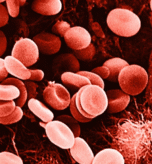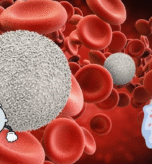From Cleopatra’s milk baths to the intricate henna designs of Indian brides, ancient beauty practices have long fascinated us with their unique blend of natural ingredients, rituals, and symbolism. These practices not only enhanced physical appearance but also reflected cultural values, spiritual beliefs, and social status. Let’s embark on a journey through time and explore some of the most intriguing ancient beauty practices from around the world.
Egyptian Beauty Secrets
In ancient Egypt, beauty was a reflection of one’s social status and spiritual well-being. Egyptians used various natural ingredients to maintain their skin and hair. Some notable practices include:
- Malachite eye shadow: Ground malachite, a green mineral, was used as eye shadow to protect the eyes from the sun and ward off evil spirits.
- Kohl eyeliner: A mixture of galena (a lead-based ore) and other ingredients was applied to the eyes to protect them from the harsh desert sun and to add depth and allure.
- Henna hair dye: Henna was used to stain hair, nails, and skin, giving them a reddish-brown hue.
- Milk baths: Milk was believed to soften and whiten the skin, and was often used in baths and face masks.
Greek and Roman Beauty Rituals
In ancient Greece and Rome, beauty was highly valued, and various practices were used to maintain physical perfection. Some notable practices include:
- Olive oil and honey face masks: A mixture of olive oil and honey was applied to the face to moisturize and nourish the skin.
- Wine and herbs: Wine and herbs were used in baths to relax and rejuvenate the body.
- Depilation: Greeks and Romans used various methods, including depilatory creams and waxing, to remove unwanted body hair.
Indian Beauty Traditions
In ancient India, beauty was deeply connected to spirituality and cultural heritage. Some notable practices include:
- Ayurvedic skincare: Ayurvedic principles were used to balance the skin’s doshas (energies) and maintain healthy, glowing skin.
- Henna designs: Intricate henna designs were applied to the hands and feet to celebrate special occasions and to adorn the body.
- Turmeric face masks: Turmeric was used in face masks to brighten and even out skin tone.
Chinese Beauty Secrets
In ancient China, beauty was often associated with spiritual balance and harmony. Some notable practices include:
- Ginseng skincare: Ginseng was used in skincare products to promote vitality and anti-aging benefits.
- Rice powder face masks: Rice powder was used in face masks to soften and brighten the skin.
- Silk and jade: Silk and jade were believed to have skin-smoothing and anti-aging properties.
African Beauty Practices
In ancient Africa, beauty was often associated with cultural identity and community. Some notable practices include:
- Shea butter skincare: Shea butter was used to moisturize and protect the skin from the harsh African climate.
- Indigo and ochre: Natural pigments like indigo and ochre were used to adorn the body and create intricate designs.
- Braiding and adornment: Hair braiding and adornment were used to signify cultural identity, status, and spirituality.
These ancient beauty practices not only reveal the resourcefulness and creativity of our ancestors but also offer valuable insights into the cultural and spiritual significance of beauty. Many of these practices continue to inspire modern beauty trends, and their natural ingredients and rituals remain relevant today. By embracing the wisdom of ancient beauty practices, we can reconnect with nature, culture, and our own unique beauty



